No more dry chicken
Sometimes things go wrong in the kitchen. If you’re like me, there’s no way you’ll ever own up to making a mistake while preparing that perfect holiday dinner. Not to worry, though; this guide will help you mask those screw ups like everything has been totally under control the entire time. That’s right, I’m here to rescue your dinner and your pride.
Soggy Veggies

The Problem
It’s hard to know when those veggies are perfectly steamed. The trick is to watch the color (perfectly vibrant, just on the verge of going dark). When you do overcook them, though, there’s still some time for a graceful recovery.
The Fix
If you’ve overcooked your vegetables, they’ve probably begun to resemble baby food mush (it happens). If they’re not too far gone, quickly plunge them into cold water. This will immediately stop the cooking process and prevent the veggies from losing any more of their texture. Then, sprinkle them with some cheese and broil for a few minutes, just until the cheese melts and forms a light crisp (it won’t take long, so pay attention).
If your veggies have completely lost their form, however, you can always puree them for some soup or gratin and serve up an altered menu like nothing happened.
This article originally appeared on Spoon University
More from Spoon University:
- 21 Food Hacks That’ll Make Your Life Exponentially Better
- 35 Dessert Recipes for Anyone Who Hates Chocolate
- How to Make a Week’s Worth of Dinners for Under $25 at Trader Joe’s
Too Much Spice

The Problem
Sometimes you need to learn the hard way that 1/4 teaspoon of cayenne pepper is enough.
The Fix
Spices are tricky. Unless you’re really familiar with what you’re using, it’s hard to gauge just how much you’ll need for that perfect flavor. Sometimes, even a pinch of extra pepper can send your dish (and your taste buds) into a blazing inferno. Depending on your dish, though, there are a few creative ways to remedy the situation. If your dish permits, add some sweetness — sugar, jam, or dried fruits — to offset the spice, or if you’re making something creamy (like guacamole), add some sour dairy — like plain yogurt or sour cream — to balance the flavors.
Sticky Rice

The Problem
Sometimes when I get lazy, I tend to ‘eyeball’ my measurements. Sometimes when I “eyeball” my measurements, I add way too much water to my rice.
The Fix
Sticky rice is just rice that’s been slightly overcooked (usually because you added too much water). If it’s not too far gone (in which case your best bet is turning it into a porridge or pudding), rinse the rice under cold water to help separate the grains and get rid of some of the stickiness.
Soggy Pasta

The Problem
It’s hard to screw up boiling something, but I assure you, even the best chefs have been there.
The Fix
No one likes soggy pasta any more than soggy vegetables. If you find yourself in such a dilemma, heat up a pan and sauté the pasta in some olive oil for a few minutes. Make sure to use a hot pan and don’t cook for too long — your intention is not to cook the pasta (it’s already overcooked), only firm up the outside to improve the texture.
Stuck Cake

The Problem
A moment of silence for all of those bundt cakes that had so much potential.
The Fix
Sometimes, no matter how much cooking spray you use, you find that the cake you’ve been working so hard on just doesn’t want to come out of the pan (especially upsetting if you’re making a bundt cake). Before you try any risky moves, though, here’s some advice: Make sure to wait for the cake to cool initially before attempting to remove it (the cooling process helps it settle and pull away from the sides of the pan), and if it still won’t budge, try setting the bottom of the pan in hot water to loosen up the fats and help the cake slide right out.
If you do end up tearing your cake, you can always get creative with decorations to mask the problem (think strategically placed chocolate ganache, caramel sauce, nuts, or berries).
Too Much Sugar

The Problem
Sugar is great, just not when you use a cup instead of a tablespoon.
The Fix
There’s not much you can do to save an already-baked cookie that’s sporting a tad too much sugar, but you can try to avoid the situation by tasting your batter as you go along. If you find that the batter is too sweet, add some acid (think lemon or lime) or some acidic dairy (sour cream or yogurt) to balance the flavors.
Don’t add salt, though, since it actually enhances the sweetness.
Charred Steak That Is Raw Inside

The Problem
Hey, meat and fish are very difficult to execute perfectly. There’s a whole array of variables like thickness, firmness, temperature, oil level, and timing that go into making that perfect medium rare steak. So cut yourself some slack and use this tip when it’s starting to go south.
The Fix
When you cook meat or fish too quickly at a temperature that is too high, you end up with a charred block of protein that is essentially raw inside (and not in a medium rare way). Don’t continue cooking it on the stove since this will just increase the char, but pop it in the oven at 300˚F and cook until your desired doneness.
Seized Chocolate

The Problem
No matter how experienced you may be, this is a mistake you’re bound to make sooner or later. Luckily, though, there’s a super easy fix.
The Fix
Melting chocolate is a very delicate affair. Melting at too high a temperature (without using a double boiler) or accidentally adding just a few drops of water will make it seize up and turn from a glorious, velvet concoction to a dull clump. Depending on how much water got inside or how badly the chocolate was scorched, you might still be able to revive it by adding some cream or butter and heating in a double boiler. The fat will help balance the mixture and return its smooth texture.
Your Dish is Too Bitter

The Problem
I’ll be honest, the first time I bought kale, I had no idea what to do with it. That’s because I didn’t have this guide.
The Fix
So you tried to be trendy and make a kale salad, but ended up with a bitter mess? Don’t let this make you give up on kale. Try adding some fresh lemon juice and a dash of nutmeg to help balance the flavors. You won’t take the bitterness out of the greens, but the acidity of the lemon can help mask it, while the nutmeg can turn that nasty bitterness into a deep nutty flavor. As a bonus, add some chopped pecans or walnuts to really transform your salad game.
Dry Chicken

The Problem
Like I said, meat is difficult.
The Fix
To salvage an overcooked, super dry chicken, slice the meat and pour some gravy, melted cheese, or virtually any sauce of your liking over it before you serve it up. Not only will your friends appreciate not having to deal with carving the bird, but presenting the meat in manageable slices doused in rich sauce will help take the accent off the dry texture.
-
Soggy Veggies

Danny Kim for TIME The Problem
It’s hard to know when those veggies are perfectly steamed. The trick is to watch the color (perfectly vibrant, just on the verge of going dark). When you do overcook them, though, there’s still some time for a graceful recovery.
The Fix
If you’ve overcooked your vegetables, they’ve probably begun to resemble baby food mush (it happens). If they’re not too far gone, quickly plunge them into cold water. This will immediately stop the cooking process and prevent the veggies from losing any more of their texture. Then, sprinkle them with some cheese and broil for a few minutes, just until the cheese melts and forms a light crisp (it won’t take long, so pay attention).
If your veggies have completely lost their form, however, you can always puree them for some soup or gratin and serve up an altered menu like nothing happened.
This article originally appeared on Spoon University
More from Spoon University:
-
Too Much Spice

Danny Kim for TIME The Problem
Sometimes you need to learn the hard way that 1/4 teaspoon of cayenne pepper is enough.
The Fix
Spices are tricky. Unless you’re really familiar with what you’re using, it’s hard to gauge just how much you’ll need for that perfect flavor. Sometimes, even a pinch of extra pepper can send your dish (and your taste buds) into a blazing inferno. Depending on your dish, though, there are a few creative ways to remedy the situation. If your dish permits, add some sweetness — sugar, jam, or dried fruits — to offset the spice, or if you’re making something creamy (like guacamole), add some sour dairy — like plain yogurt or sour cream — to balance the flavors.
[video id=WuCccsVR ]
-
Sticky Rice
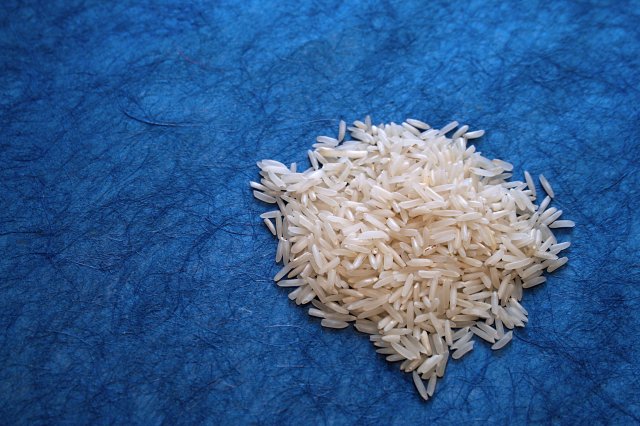
Getty Images The Problem
Sometimes when I get lazy, I tend to ‘eyeball’ my measurements. Sometimes when I “eyeball” my measurements, I add way too much water to my rice.
The Fix
Sticky rice is just rice that’s been slightly overcooked (usually because you added too much water). If it’s not too far gone (in which case your best bet is turning it into a porridge or pudding), rinse the rice under cold water to help separate the grains and get rid of some of the stickiness.
-
Soggy Pasta
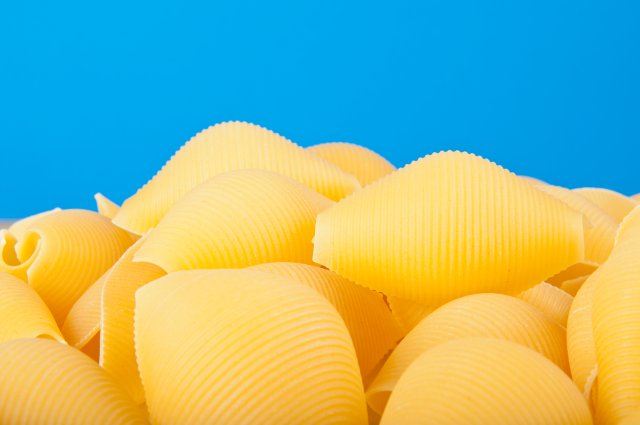
Getty Images The Problem
It’s hard to screw up boiling something, but I assure you, even the best chefs have been there.
The Fix
No one likes soggy pasta any more than soggy vegetables. If you find yourself in such a dilemma, heat up a pan and sauté the pasta in some olive oil for a few minutes. Make sure to use a hot pan and don’t cook for too long — your intention is not to cook the pasta (it’s already overcooked), only firm up the outside to improve the texture.
-
Stuck Cake
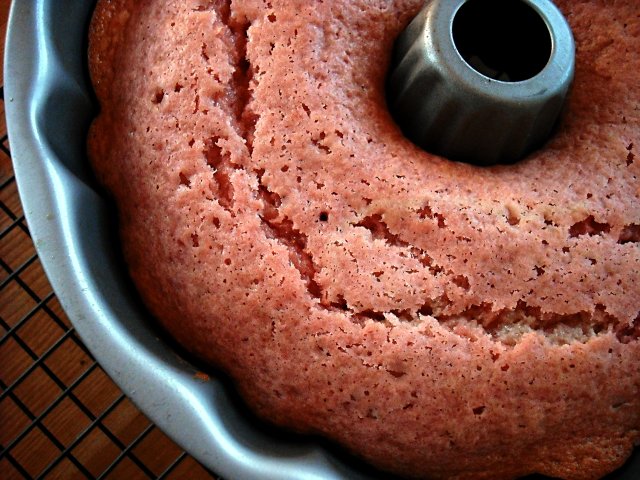
Getty Images The Problem
A moment of silence for all of those bundt cakes that had so much potential.
The Fix
Sometimes, no matter how much cooking spray you use, you find that the cake you’ve been working so hard on just doesn’t want to come out of the pan (especially upsetting if you’re making a bundt cake). Before you try any risky moves, though, here’s some advice: Make sure to wait for the cake to cool initially before attempting to remove it (the cooling process helps it settle and pull away from the sides of the pan), and if it still won’t budge, try setting the bottom of the pan in hot water to loosen up the fats and help the cake slide right out.
If you do end up tearing your cake, you can always get creative with decorations to mask the problem (think strategically placed chocolate ganache, caramel sauce, nuts, or berries).
-
Too Much Sugar

Getty Images The Problem
Sugar is great, just not when you use a cup instead of a tablespoon.
The Fix
There’s not much you can do to save an already-baked cookie that’s sporting a tad too much sugar, but you can try to avoid the situation by tasting your batter as you go along. If you find that the batter is too sweet, add some acid (think lemon or lime) or some acidic dairy (sour cream or yogurt) to balance the flavors.
Don’t add salt, though, since it actually enhances the sweetness.
-
Charred Steak That Is Raw Inside
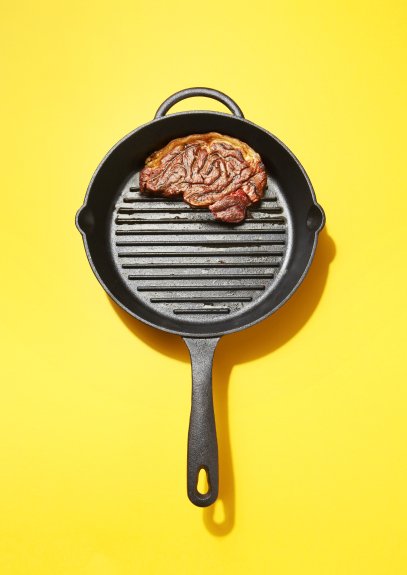
Getty Images The Problem
Hey, meat and fish are very difficult to execute perfectly. There’s a whole array of variables like thickness, firmness, temperature, oil level, and timing that go into making that perfect medium rare steak. So cut yourself some slack and use this tip when it’s starting to go south.
The Fix
When you cook meat or fish too quickly at a temperature that is too high, you end up with a charred block of protein that is essentially raw inside (and not in a medium rare way). Don’t continue cooking it on the stove since this will just increase the char, but pop it in the oven at 300˚F and cook until your desired doneness.
-
Seized Chocolate

Getty Images The Problem
No matter how experienced you may be, this is a mistake you’re bound to make sooner or later. Luckily, though, there’s a super easy fix.
The Fix
Melting chocolate is a very delicate affair. Melting at too high a temperature (without using a double boiler) or accidentally adding just a few drops of water will make it seize up and turn from a glorious, velvet concoction to a dull clump. Depending on how much water got inside or how badly the chocolate was scorched, you might still be able to revive it by adding some cream or butter and heating in a double boiler. The fat will help balance the mixture and return its smooth texture.
[video id=Wn9TxKZs ]
-
Your Dish is Too Bitter
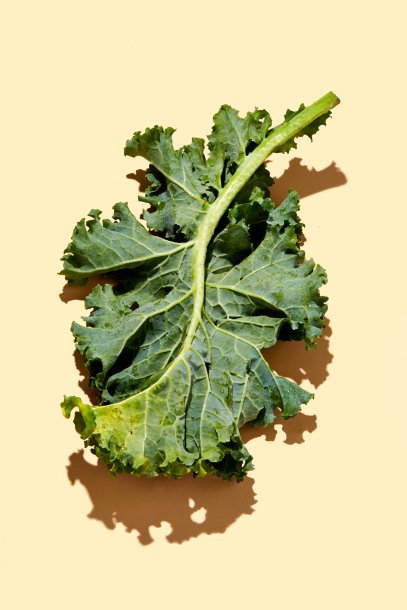
Danny Kim for TIME The Problem
I’ll be honest, the first time I bought kale, I had no idea what to do with it. That’s because I didn’t have this guide.
The Fix
So you tried to be trendy and make a kale salad, but ended up with a bitter mess? Don’t let this make you give up on kale. Try adding some fresh lemon juice and a dash of nutmeg to help balance the flavors. You won’t take the bitterness out of the greens, but the acidity of the lemon can help mask it, while the nutmeg can turn that nasty bitterness into a deep nutty flavor. As a bonus, add some chopped pecans or walnuts to really transform your salad game.
-
Dry Chicken
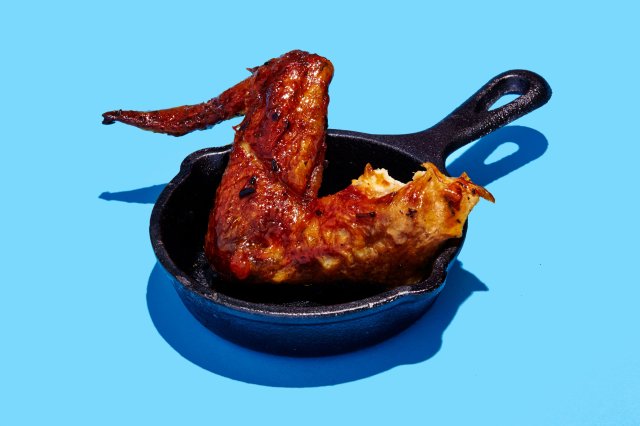
Danny Kim for TIME The Problem
Like I said, meat is difficult.
The Fix
To salvage an overcooked, super dry chicken, slice the meat and pour some gravy, melted cheese, or virtually any sauce of your liking over it before you serve it up. Not only will your friends appreciate not having to deal with carving the bird, but presenting the meat in manageable slices doused in rich sauce will help take the accent off the dry texture.